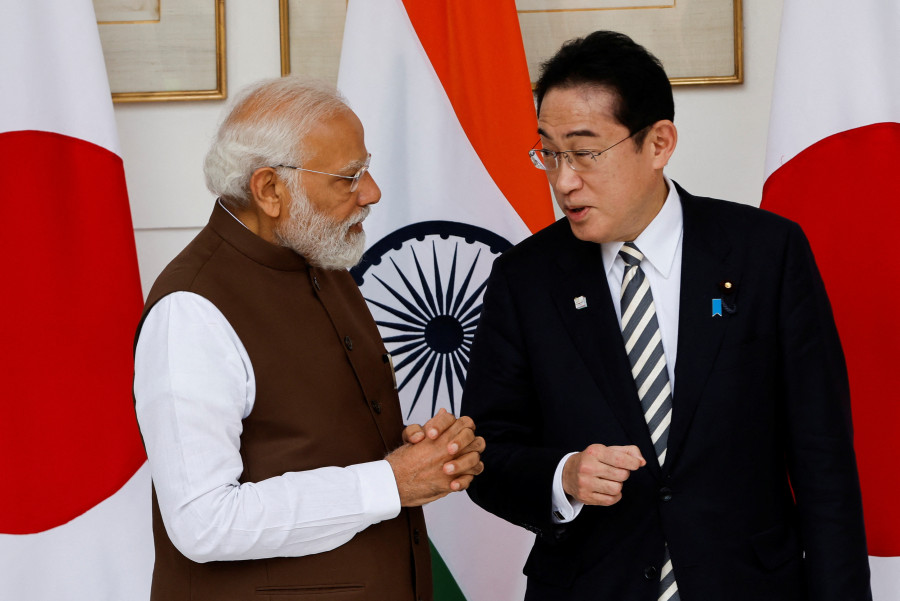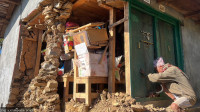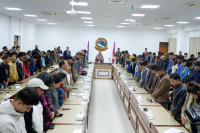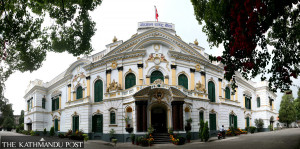Columns
Japan’s infra push in South Asia
The country's investments in South Asia should be seen in the context of its projects in the ASEAN region and not just as an Indo-Pacific strategy.
Smruti S Pattanaik
The Bay of Bengal-Northeast India industrial value chain proposed by Japanese Prime Minister Fumio Kishida during his visit to India last month is envisaged to enhance connectivity with Nepal and Bhutan too. This industrial value chain will be part of Japan’s Matarbari deep sea port investment in Bangladesh which could emerge as a regional connectivity hub. Japan has substantial investment in connectivity projects in the Association of Southeast Asian Nations (ASEAN) region, but its infrastructure development initiatives in South Asia are comparatively recent. It is interesting to note that India has emerged as an important partner of Japan and has committed to joint investment in infrastructure projects—a new model of cooperation that started with the announcement of the Asia-Africa growth corridor in 2016.
Japan’s investments in South Asia should be seen in the context of its projects in the ASEAN region and not just as an Indo-Pacific strategy. It is already supporting the development of the Greater Mekong Subregion. The Japan International Cooperation Agency (JICA) funded East-West Economic Corridor Improvement Project (New Bago-Kyaikto Highway Section) in Myanmar will help “Myanmar and neighbouring countries by constructing bypasses and bridges and improving the sections regarded as bottlenecks on the East-West Economic Corridor”. In 2017, Japanese Foreign Minister Taro Kono, speaking at Columbia University, said that Japan would pursue economic prosperity through infrastructure connectivity and expand road and sea lane connectivity to Bangladesh, India and beyond the ocean to Kenya in Africa.
Connecting eastern South Asia
It is important to note that there is a prospect of connecting the trilateral highway between India, Myanmar and Thailand to the Greater Mekong Subregion for seamless transport connectivity between eastern South Asia and ASEAN. The Bay of Bengal is likely to emerge as a major maritime hub as many ports in India, Bangladesh and Myanmar would be abutting it. Subregional institutional structures are not new. In 1997, some South Asian countries had proposed forming the South Asia Growth Quadrangle within the South Asian Association for Regional Cooperation (SAARC) framework. But this initiative did not move forward as some countries saw it as subversion of SAARC. The Bangladesh-Bhutan-India-Nepal (BBIN) initiative was launched outside SAARC, but it is facing teething problems. The infrastructure development projects in the sub-region need to be seen as a push towards subregional cooperation taking BBIN and BIMSTEC together.
In 2014, Japan proposed the Bay of Bengal Industrial Growth Belt initiative (BIG-B). Bangladesh’s first deep seaport at Matarbari with Japanese investment holds promise of giving a boost to BBIN connectivity. The proposed seaport would lessen the pressure on Chittagong port. JICA has approved a $1.27 billion loan for three projects in Bangladesh including the commercial port at Matarbari that is under construction by Japan.
Japan has made a huge investment in the third terminal of Shahjalal International Airport in Dhaka while China is investing in the MAG Osmani International Airport in Sylhet. In the race to develop ports in Bangladesh, both China and India have proposed to invest in Mongla port which is a transhipment hub for India, Nepal and Bhutan. With the construction of the Padma bridge, the economic importance of both Mongla and Pyara ports in Bangladesh has been enhanced.
Indo-Pacific push
In 2014, when the then Japanese prime minister Shinzo Abe visited Sri Lanka, the then president Mahinda Rajapaksa had expressed his desire for Japan’s “cooperation in the fields of ports and harbours development and marine education”. However, China emerged as an important partner in developing infrastructure in Sri Lanka after it joined the Chinese-led Belt and Road Initiative (BRI). In 2018, Japanese foreign minister visited Sri Lanka and expressed Japan’s interest to “further promote infrastructure development cooperation to strengthen connectivity of ports”.
India and Japan joint collaboration faced challenges in Sri Lanka. The initial plan to develop the Eastern Container Terminal (ECT) in Colombo could not progress as the then president Gotabaya Rajapaksa scrapped the trilateral agreement and awarded the project to China. However, Sri Lanka agreed to allocate the development of the Western Container Terminal (WCT) after India and Japan reacted to the cancellation. Around the same time, the Colombo Light Rail Transport project of Japan was cancelled as being too expensive. Apart from various small projects, Japan was also involved in the expansion of Bandaranaike International Airport. However, Sri Lanka’s economic crisis prompted JICA to suspend 12 projects in that country.
Japan was upset by the decision of the former Rajapaksa regime, and the current Ranil Wickremesinghe administration has tried to make amends with the country, which is its largest bilateral creditor. Japan and India along with France have joined hands to help Sri Lanka to restructure its debts as China, another lender to Sri Lanka, appears to be less forthcoming. Given the significance of the Indo-Pacific and China’s entrenched interest in Sri Lanka, Japan is trying to play a positive role in helping the island nation to recover from its economic woes.
South Asia has been prioritising connectivity as a strategy for market-led growth, and Japan has emerged as an important economic partner. With Japan’s growing economic footprint, it is emerging as a viable alternative to China as a country that has the ability to invest. Unlike in the past, it is engaged in big projects like constructing ports, highways and railways. Many see Japan’s presence as a counter to China, and this can also be seen in the context of Japan’s Indo-Pacific strategy. India has remained a valuable and important partner of Japan in this region. Both countries have joined hands to promote quality infrastructure through joint investment. Japanese investments may be seen as part of its Indo-Pacific strategy, but they are also part of Japan’s commitment to contribute to the economic wellbeing of the region. Due to low interest rates, Japan’s investments may be a game changer in the region that is desperately looking for capital to develop infrastructure to boost its economies.




 11.12°C Kathmandu
11.12°C Kathmandu















